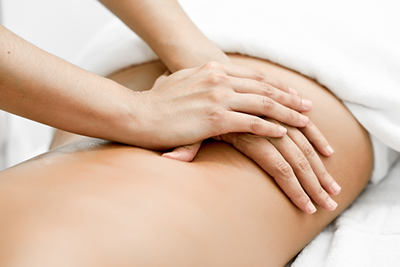
When a massage therapist’s hands touch the skin, the effect reaches down to the muscles and ligaments, and then positively influences the circulatory, lymphatic, and nervous systems. Healing touch, a sensitive style of communication, speaks safety and comfort. “The beauty of massage lies in it being such a simple, direct form of human contact,” says Susan Mumford in The New Complete Guide to Massage (Penguin Group, 2006).
Massage is a safe therapeutic art, considered by many to be a vehicle for mental, physical, and emotional health. People seek massage for myriad reasons—from simple relaxation to addressing muscular injuries. An intuitive therapist is likely to pick up many clues about your needs from an intake interview before the session, and even by the way you sit, talk, and walk. The written and verbal information you provide and the questions you ask are also crucial for a successful bodywork session. Mention particular issues you’d like to have addressed and feel free to ask about the techniques being used in your session.
Inform your therapist of short- or long-term medical conditions. Massage is used cautiously, or not at all, in some situations. For example, massage is generally avoided when a person has fever, open wounds, or certain skin disorders. People with long-term medical conditions, such as cancer, diabetes, or osteoporosis, should seek a doctor’s advice before massage. With medical supervision, a trained bodyworker often helps ease long-term pain and stress, usually with gentle strokes and personalized techniques.
During the session, vocalize your needs as they arise. If the room is too warm or cold, say so. Herbal and aromatherapeutic oils add healing benefits to massage. Tell your therapist if you are sensitive to an herb or essential oil, if you’d like him or her to use more (or less) massage oil, or if you don’t care for an oil’s scent.
What if you feel pain during massage? In Massage: Mind and Body (DK Publishing, 2003), Larry Costa says we must “distinguish between comfortable and uncomfortable pain.” When working on sensitive areas of your body, the therapist will begin slowly then move toward deep-tissue work. “You may experience some discomfort to begin with, but this should diminish after a few minutes as the muscles relax,” Costa says. This is comfortable pain. “Pain that causes you to wince, cry out, or tense up is probably not doing you any good.” Ask your therapist for less or more pressure, depending on your needs.
“The healing touch of massage is one of the best gifts you can give your body,” writes Esme Floyd in Body Massage (Carlton Books, 2004). Touch, a basic human impulse, soothes the body and relaxes the mind, promoting physical and mental well-being. Massage sessions provide a safe space for you to relax, reflect, and feel comfortable in your own skin.
Laurie Chance Smith is a Texas-based writer and photographer who works for national and international markets on a plethora of topics. She can be reached at lauriechancesmith@yahoo.com.